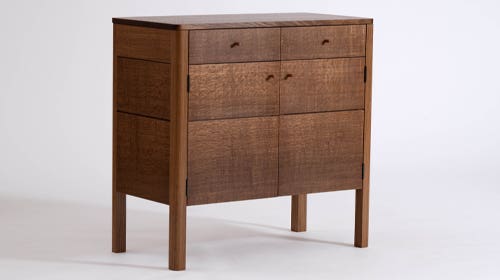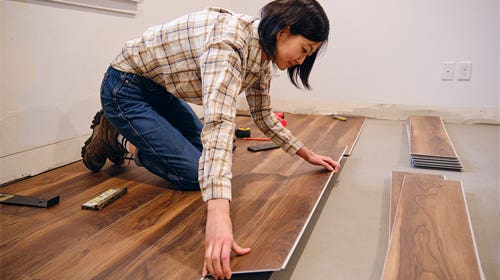A long wait, but a regal presentation
The Metropolitan Museum of Art in New York is currently showing, “Art of the Royal Court: Treasures in Pietre Dure from the Palaces of Europe,” a special one-time exhibition that…
The Metropolitan Museum of Art in New York is currently showing, “Art of the Royal Court: Treasures in Pietre Dure from the Palaces of Europe,” a special one-time exhibition that took nearly five years to plan and put together.
“It’s the most comprehensive exhibition on this subject that has ever been mounted, and the subject is broadly defined in terms of hardstone carving and pietre dure, which is the more mosaic, piecing together of flat pieces of hardstone,” says Ian Wardropper, chairman of the Department of European Sculpture and Decorative Arts at the Metropolitan Museum of Art. “It’s the first time that major examples of this have been brought together in one place. It’s a very rare chance to see a form of craftsmanship at its highest level.”
The exhibition covers the period from about 1550 to 1820. Approximately 150 tables, cabinets, caskets, jewelry, vases and sculptures represent the range of the extraordinary art form cultivated by the courts of Europe through the four centuries. Pietre dure began in ancient times and flourished again beginning in the 16th century.
Built to last
The rebirth of pietre dure began in Italy during the excavation of ancient buildings, as caches of ancient stone inlaid into buildings were uncovered. The stone was “recycled” and put into items such as table tops, cabinet panels and jewelry boxes. Ebony was much admired during the period and, although in relatively small supply and very expensive, it was used in most of the pieces, in part because of its stability.
“A lot of the ebony was done in fairly thin veneers because it was so expensive, and it will pop off with time,” Wardropper explains. “So many of these objects do need to be treated well and often need some repair; conservation over time. A number of the objects in the show are primarily a wood cabinet that is inlaid with all kinds of things — stones, painted stones, ivory and bronze. So all of these things have been laid into an ebony matrix because the ebony is pretty stable. It will shift a little bit. Certainly wood and stone expand and contract at different rates, so there will always be that problem. But I think the craftsmen were aware of this and they would allow the tolerances that would permit that.”
The craftsmen of the period were all masters of specific types of work. The Barberini Cabinet (pictured) was built by 27 master craftsmen and took between two and three years to build.
Most of the pieces were commissioned, although there was a small amount of speculative work.
“A woodshop was set up in the 1580s that still exists today in Florence,” Wardropper adds. “It’s called the Opificio de la Pietre Dure and is now basically a conservation center. There you had teams of people who specialized in this work, which was essentially a mosaic of colored stones that would be put together like a jigsaw puzzle and then laminated to another surface. Then other kings and monarchs and dukes around Europe loved this work, so they started importing craftsmen to their cities and importing stones, so there becomes a major center that develops in Prague [Czech Republic], Germany, France, Spain and Russia. The exhibition kind of follows the dissemination of this movement across Europe as the craftsmen also circulate throughout Europe taking their technical knowledge with them.”
Many of the pieces, especially the cabinets, display decorative scenes, some abstract, others depicting flowers, animals, landscapes, religious art and an array of other subjects. For the commission pieces, the scenes were usually selected by the owner.
Foggini featured
Many of the exhibit’s pieces were designed by Giovanni Battista Foggini in Florence. He was primarily a sculptor, but he also designed some of the most important pieces of furniture. They were sculptural in design and had a lot of sculptural mounts designed to go on them.
“What he was good at was understanding the needs of a stone carver, of a bronze worker and of a woodworker, so he would combine those into ways in which they would seem to kind of grow naturally out of one another,” says Wardropper. “He understood the properties well enough so that he could make a design, allowing each artist to do his best.”
The exhibition is arranged both geographically — according to the center of production — and chronologically. Besides furniture, other objects on display include perfume bottles, jugs, bowls, vases, bedpost finials, flasks, a portable altar, sculptures, clocks, cups, snuffboxes, jewelry, an inkstand, a pair of candelabra and a chessboard.
“Art of the Royal Court: Treasures in Pietre Dure from the Palaces of Europe” takes place in the museum’s special exhibition galleries on the second floor and runs through Sept. 21.
Contact: Metropolitan Museum of Art, 1000 Fifth Ave., New York, NY 10028. Tel: 212-535-7710. www.metmuseum.org
This article originally appeared in the October 2008 issue.







